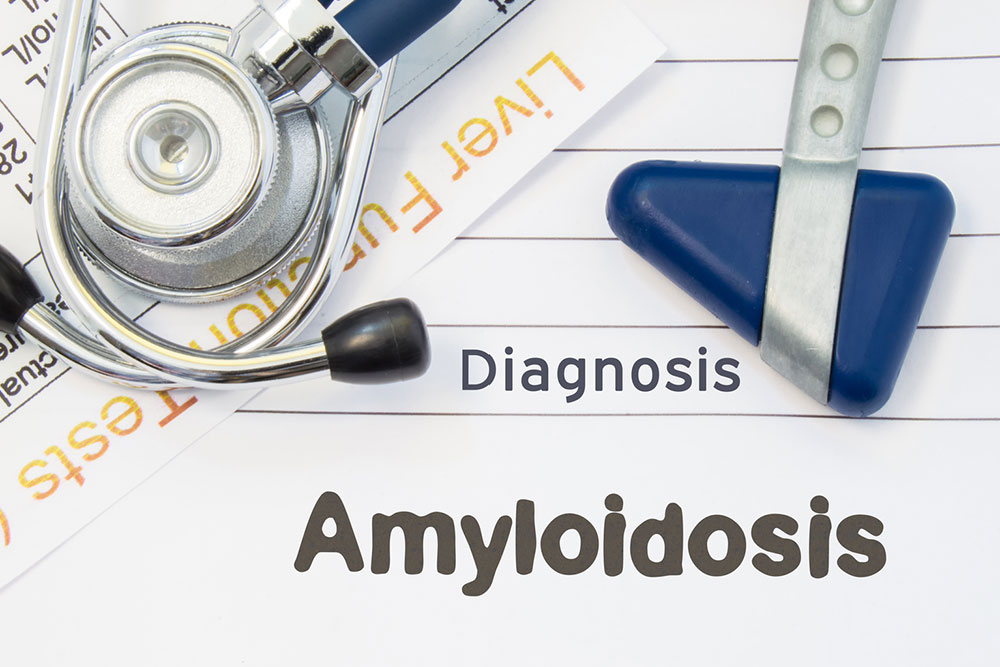Comprehensive Overview of the Two Main Types of Hereditary Amyloidosis and Their Impact on Health
Hereditary amyloidosis is a complex genetic disorder characterized by abnormal protein deposits affecting multiple organs. This comprehensive overview explores its two main types—non-ATTR and ATTR—detailing their causes, symptoms, diagnosis, and emerging treatments. Early diagnosis and innovative therapies are crucial for managing this progressive disease, improving patient outcomes. Understanding these distinctions helps clinicians develop targeted treatment plans, offering hope for affected individuals and families. Stay informed to recognize early signs and explore new options in amyloidosis management.

Hereditary amyloidosis is a rare but serious genetic disorder characterized by the abnormal accumulation of amyloid proteins in various tissues and organs throughout the body. These amyloid deposits are the result of inherited gene mutations that cause proteins to misfold, leading to structural abnormalities that interfere with normal cellular functions. Over time, these deposits can cause progressive tissue damage, organ failure, and a range of clinical symptoms. While the condition can manifest at relatively different ages, most symptoms tend to develop during adulthood, making early detection and management critical for improving patient outcomes. Understanding the two primary types of hereditary amyloidosis is essential for effective diagnosis and treatment planning.
Hereditary amyloidosis is primarily classified into two main categories based on the type of amyloid proteins involved and the underlying genetic mutations. Recognizing the distinctions between these types helps clinicians tailor therapeutic strategies and predict disease progression more accurately. The two main categories are non-ATTR amyloidosis and ATTR amyloidosis, each with unique pathogenic mechanisms, clinical features, and treatment considerations.
Non-ATTR Amyloidosis: A Rare but Significant Subtype
Non-ATTR amyloidosis is a less common form of hereditary amyloidosis, resulting from specific mutations in a variety of proteins such as Apolipoprotein AI, Fibrinogen Aa, and Lysozyme, among others. Unlike the more prevalent ATTR type, this form does not primarily involve transthyretin (TTR) protein but rather other proteins that misfold and deposit in tissues. These deposits predominantly affect the kidneys, often leading to renal failure, which is a common and severe manifestation in affected patients.
The clinical presentation of non-ATTR amyloidosis varies depending on the specific protein involved and the organs affected. Patients may develop symptoms related to kidney dysfunction, such as proteinuria, edema, hypertension, and progressive renal insufficiency. Less frequently, other organs like the liver, heart, or nervous system can be involved, leading to a broader spectrum of symptoms such as hepatomegaly, arrhythmias, or peripheral neuropathy.
Due to its rarity, non-ATTR amyloidosis can pose diagnostic challenges. It often requires a combination of advanced laboratory testing, tissue biopsies, and genetic analysis to distinguish it from other amyloidoses and kidney diseases. Awareness among healthcare professionals is vital because early diagnosis can significantly influence management and prognosis.
ATTR Amyloidosis: The Most Common Hereditary Form
ATTR amyloidosis, caused by mutations in the transthyretin (TTR) gene, represents the most common hereditary form of amyloidosis. The transthyretin protein is primarily produced in the liver and plays a crucial role in transporting thyroxine and retinol-binding protein-vitamin A complex. Mutations alter TTR's structure, causing it to misfold and aggregate into amyloid fibrils that deposit mainly in nerves, the heart, the liver, and other tissues.
This form of amyloidosis presents with a characteristic pattern of organ involvement. Patients often experience peripheral sensorimotor neuropathy, with symptoms such as numbness, tingling, and weakness starting in the feet and progressing proximally. Cardiac involvement is also common, resulting in restrictive cardiomyopathy, arrhythmias, and heart failure. The combination of neuropathy and cardiomyopathy can severely impair quality of life and increase mortality risk.
The onset of symptoms in ATTR amyloidosis varies widely, with some patients developing issues in their 30s or 40s, while others may not show signs until later in life. This variability depends on the specific mutation, with certain mutations associated with earlier onset and more aggressive disease progression. Diagnosis often involves genetic testing, tissue biopsy with Congo red staining, and advanced imaging like cardiac MRI or nuclear scintigraphy to detect amyloid deposits.
Current Treatments and Management Options
The management of hereditary amyloidosis involves a multidimensional approach aimed at alleviating symptoms, slowing disease progression, and preventing organ failure. Treatment strategies differ based on the type of amyloidosis, affected organs, and disease severity.
Supportive care remains essential for managing symptoms. For nerve involvement, medications such as pain relievers, physical therapy, and bracing help improve mobility and reduce discomfort. Cardiology and nephrology consultations are critical for patients with cardiac or renal involvement, offering interventions like diuretics, anticoagulants, or dialysis when necessary.
At the disease-modifying level, therapies aim to inhibit the production or stabilize the structure of amyloidogenic proteins. For ATTR amyloidosis, liver transplantation has historically been employed because the liver is the primary source of mutant TTR. This procedure can significantly reduce mutant TTR levels and slow disease progression, especially in patients with early-stage neuropathy. However, liver transplantation is invasive and not suitable for all patients.
Emerging therapies include TTR stabilizers such as tafamidis and diflunisal, which help maintain the native structure of TTR and prevent misfolding. Other innovative treatments involve gene silencing techniques using antisense oligonucleotides (like inotersen) or RNA interference (like patisiran), which effectively reduce the production of transthyretin in the liver. These novel therapies have demonstrated promising results in slowing the progression of neuropathy and cardiac symptoms in clinical trials.
For non-ATTR amyloidosis, treatment largely focuses on managing organ failure and addressing the underlying genetic mutations, which may include supportive therapies, immunosuppressants, or specific chemotherapies depending on the context, especially if associated with conditions like familial Fibrinogen Aa amyloidosis.
The Importance of Early Diagnosis and Future Directions
Timely diagnosis of hereditary amyloidosis is crucial because early intervention can significantly alter the disease course and improve survival. Advances in genetic testing, imaging modalities, and biomarker discovery have enhanced clinicians' ability to identify the disease early, even before significant organ damage occurs.
Researchers are continually exploring new treatments, including gene editing techniques, novel amyloid fibril destabilizers, and personalized medicine approaches. Improved understanding of the molecular mechanisms underlying amyloid formation also promises to lead to more targeted therapies with fewer side effects.
Patient support groups and awareness campaigns play vital roles in educating at-risk populations and promoting early screening. Given the hereditary nature of the disease, family members of diagnosed individuals should undergo genetic counseling and testing to assess their risk and consider early preventative strategies.
Conclusion
Hereditary amyloidosis remains a complex and challenging disorder, but advances in diagnosis and treatment are offering hope to affected individuals. Recognizing the distinctions between non-ATTR and ATTR amyloidosis is fundamental for healthcare providers to optimize outcomes. Continued research and increased awareness can facilitate early diagnosis, innovative therapies, and improved quality of life for patients living with this condition.





